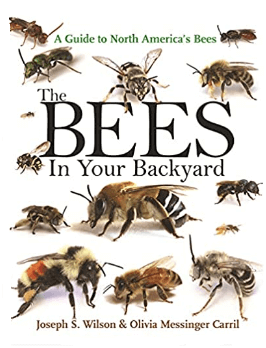Wasps vs. Honey Bees
| Honeybee | Wasp | |
|---|---|---|
| Body | Thicker & slightly fuzzy | Thin with no fuzz |
| Lifespan | 2-4 years (queen) | 1 year (queen) |
| Honey | Makes lots of honey | Makes no honey |
| Sting | Dies after stinging | Doesn’t die after stinging |
| Nature | Passive | Feisty |
| Pollination | More efficient pollinators (per bee) | Less efficient pollinators (per wasp) |
People frequently ask:
Are honeybees and wasps the same?
No, bees and wasps are different species. However, they’re closely related since they both belong to the same order of insects, Hymenoptera. Because of this, entomologists (insect biologists) consider bees and wasps to be cousins.(1)
But make no mistake.
There are numerous differences between wasps and honeybees. The most notable include appearance, temperament, stings, and eating habits.
Let’s start with the most obvious distinction:
Their appearance.
Related: Honeybees vs. Bumblebees: How Do They Compare?
Wasps vs. Honey Bees: Appearance
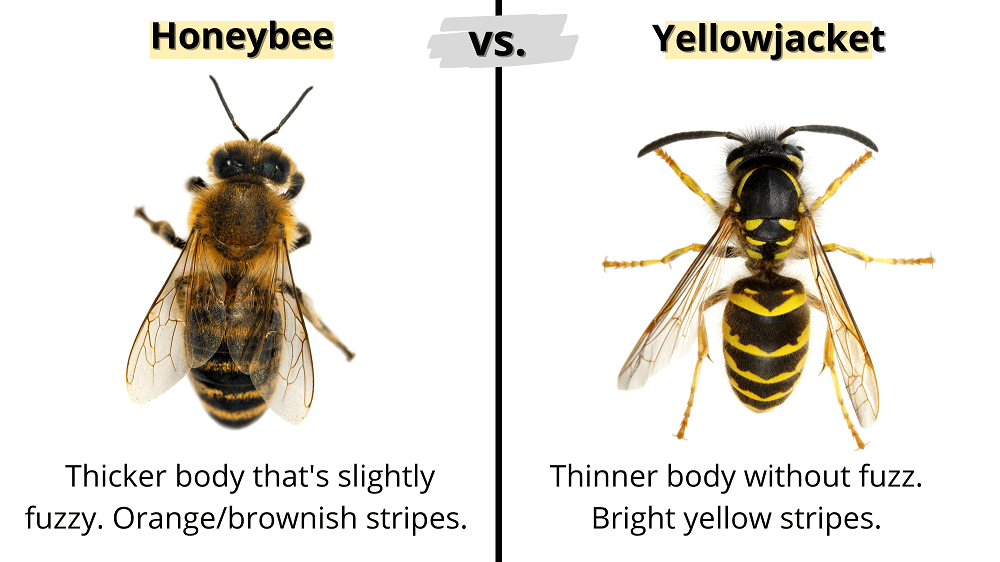
Honeybees are most often mistaken for yellowjacket wasps.
But if you look closely?
You’ll notice that honeybees have bigger bodies that are slightly fuzzy. On the other hand, wasps have thinner bodies with no fuzz which makes them appear shinier than honeybees.
Yellowjacket wasps also have more vibrant yellow stripes. In contrast, honeybees stripes are an orangish-brown color.
And in the spring, you’ll notice that honeybees are coated with “yellow dust.” This yellow dust is actually pollen from flowers.
To take it a step further?
Honeybees also have “pollen baskets” on their legs for collecting pollen. Since pollen is a honeybee’s main protein source, these pollen baskets allow them to bring food back to their colony members.
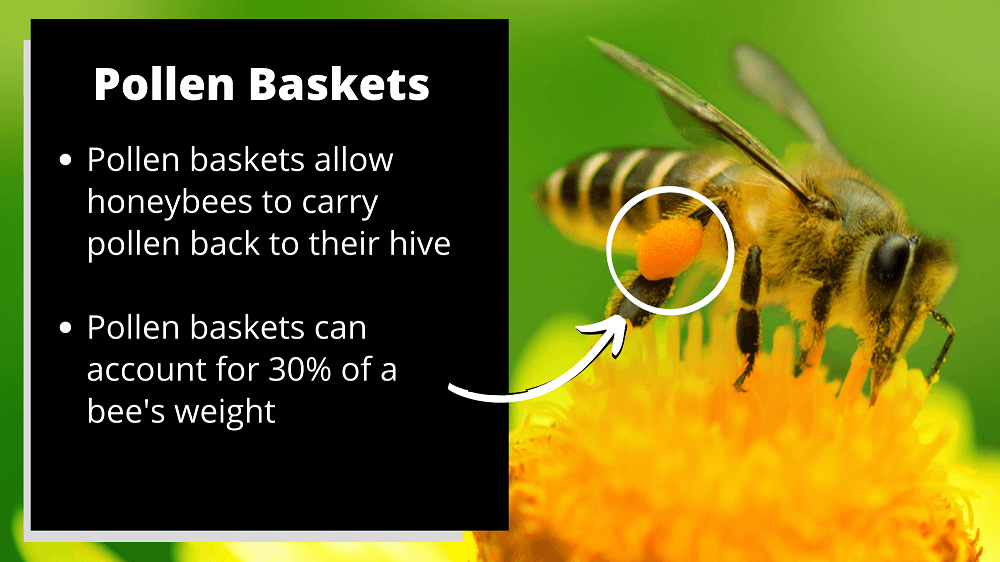
Wasps are different.
Wasps aren’t fuzzy, so pollen doesn’t get collected on their hair like it does with honeybees. They also aren’t equipped with pollen baskets on their legs.
Instead, wasps collect pollen inside their digestive tract. This is called their “crop,” and it’s a temporary place they use for collecting pollen and nectar.(2)
But here’s an important note:
You won’t always notice the pollen baskets on a honeybee. This is because honeybees make multiple trips back to their hive to empty their baskets. The pollen baskets become nearly invisible once they’re emptied.
But as they become refilled again?
Then you can see them more clearly.
Now let’s address the big topic between wasps vs. honey bees:
Their attitudes.
Related: How Many Eyes Does a Bee Have?
Wasps vs. Honey Bees: Temperament
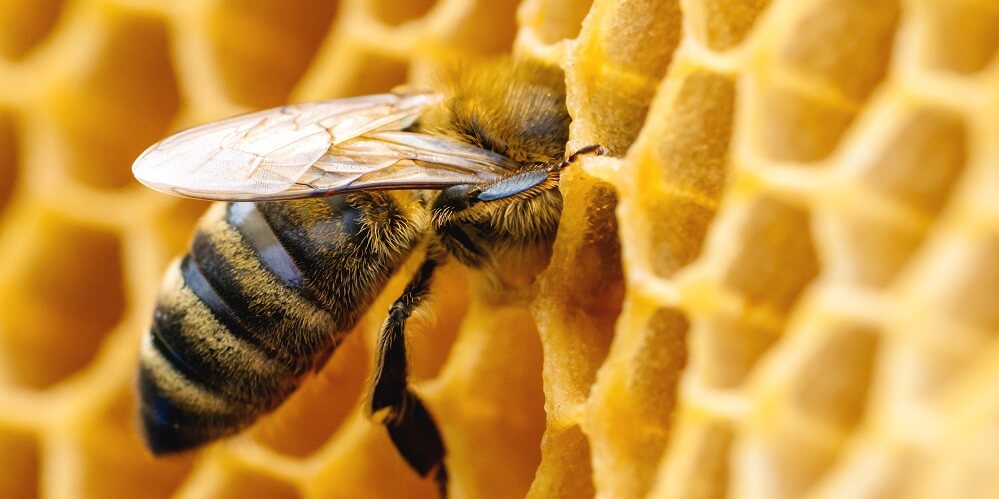
Let’s face it.
Bees get a bad rap. They’re labeled aggressive, defensive, and territorial. And you’ve likely had someone tell you, “Watch out for that bee!” before.
The truth, though?
Bees are usually gentle insects.
They buzz around from flower to flower, sipping on nectar and collecting pollen. Bees even coexist peacefully with other pollinators, such as hummingbirds and butterflies. That’s why it isn’t uncommon to see a flower garden full of bees, butterflies, and hummingbirds all buzzing happily beside each other.
But for wasps?
They tend to be more aggressive and confrontational. They’re easier to be provoked, and they can sting multiple times – unlike honeybees who die after stinging.
Now don’t get me wrong:
Wasps aren’t evil insects. Like bees, wasps are valuable to ecosystems. They play crucial roles as pollinators and ecologically important predators.(3)
So what am I saying?
Wasps deserve our respect like bees do. But it’s important to know that wasps are feisty compared to bees, so it’s best to keep your distance from them. It’s especially important to keep your distance if you’re allergic to wasp stings. An estimated two million Americans are allergic to stinging insects.(4)
Now it’s worth mentioning:
Honeybees can be defensive if you touch them or start poking around their hive. For example, be aware of any honeybee hives in your yard as you’re mowing your grass. The vibrations from the lawnmower can make the hive feel threatened.
Also, I hope this goes without saying, but I couldn’t go without saying it:
You don’t want to sling grass on the bees, so make sure the non-discharging side of the lawnmower is facing the hive.
Wasps vs. Honey Bees: Sting
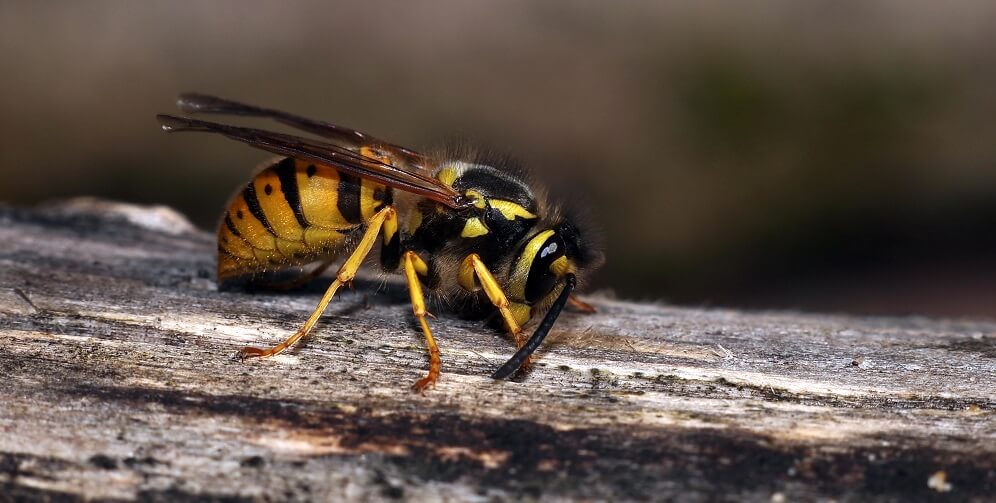
Let me get the obvious out of the way:
Both wasps and honeybees can deliver painful stings.
But as mentioned, wasps are more likely to sting because they’re feisty in nature. Honeybees will usually only sting if they’re seriously provoked – like if you touch them or get too close to their hive.
And here’s the big kicker:
Honeybees die after stinging, while wasps do not.
How come?
Because honeybees have barbed stinger with “hooks” on the end. These barbs get embedded into your skin and stuck there once the honeybee flies away.
The only problem?
A honeybee’s stinger is attached to major organs in the bee’s abdomen. And once the honeybee embeds its stinger into your skin and tries to fly away, it essentially “rips out” both its stinger and internal organs.
This means honeybees give their lives to protect their colony.
As for wasps?
It’s quite the opposite. Wasps have smooth stingers that don’t get stuck into your skin. This allows them to sting several times without dying.
Related: Do Bees Have Knees?
Wasps vs. Honey Bees: Lifespan
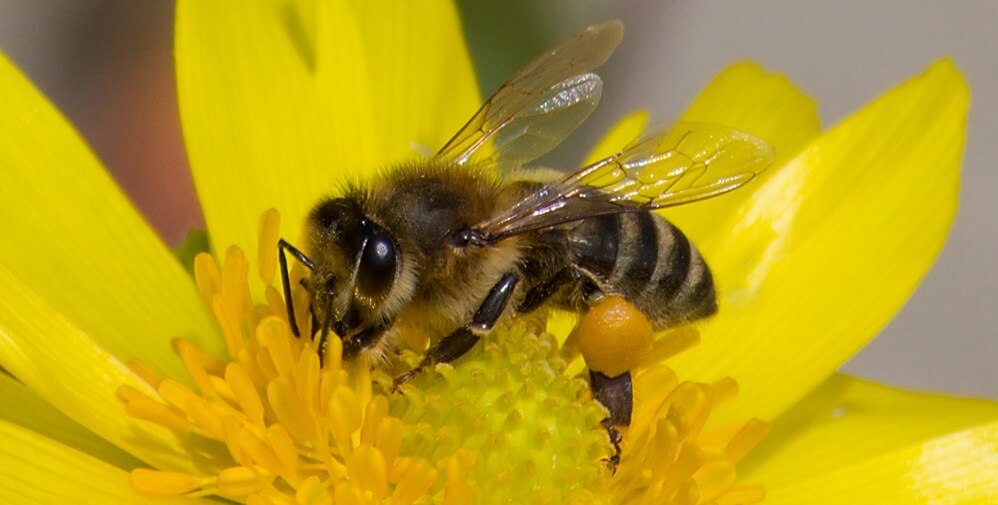
Keep in mind:
There are more than 30,000 species of wasps and 20,000 species of bees.(5, 6)
In the United States, the most commonly known types of bees are:
- Bumblebees
- Honeybees
- Carpenter bees
- Mason bees
The most commonly known types of wasps are:
- Yellowjackets
- Paper wasps
- “Mud dauber” wasps
Let’s compare the lifespan of honeybees and yellowjackets:
| Honeybee | Yellowjacket | |
|---|---|---|
| Queen | 2-4 years | 1 year |
| Worker (female) | 6-24 weeks | 10-22 days |
| Drone (male) | Dies immediately after stinging | Dies a few days after stinging |
The Queens
Queen honeybees have a long lifespan compared to yellowjacket queens. A healthy honeybee queen can live two to four years.
Queen yellow jackets live for only one year. The new queens hatch in the late summer and hibernate throughout the winter. Once spring arrives, they emerge to build their nests and lay eggs.
The Workers
Here’s a fun fact that might surprise you:
Both worker honeybees and worker yellow jackets are exclusively female.
And you guessed it. The workers do most of the work for the hive including cleaning it, protecting it, expanding it, and tending to the queen and babies.
The males have different jobs. But more on that in a bit.
Worker honeybees can live up to 6-24 weeks, depending on the season they were born and their role in the hive. Worker honeybees born in the spring tend to be busier than worker bees born in the fall. This means they have shorter lifespans because they wear themselves out faster.
In comparison, worker yellowjackets have short lifespans of only 10-22 days. And unlike honeybees, only the queen yellowjacket survives the winter. The queen hibernates while the rest of the colony dies.
On the other hand, honeybee colonies overwinter together. They huddle together to stay warm and eat their honey storage to keep them alive.
The Drones
Drones are exclusively male. Both honeybee and yellowjacket drones have one purpose:
To mate with new queens.
After mating, both drone honeybees and yellowjackets die.
For drone honeybees, they die after mating because their internal organs get torn out during the process. This is because the male honeybee inserts his endophallus into the queen.
After mating is finished, the drone attempts to fly away, but his endophallus gets stuck behind. This essentially “rips out” half of his abdomen, leaving him unable to survive.
Wasps are different. They die after mating simply because they’re not accepted back into their colony.
You see, both male honeybees and wasps are typically useless at fending for themselves or their colony.
For one, only female wasps and bees have stingers. Male wasps and bees don’t have stingers, so they can’t protect their hive.
Also, since male bees and wasps don’t clean or protect the hive, they aren’t welcome for long because they use up valuable resources.
Related: Do Sweat Bees Sting or Bite?
Wasps vs. Honey Bees: Honey
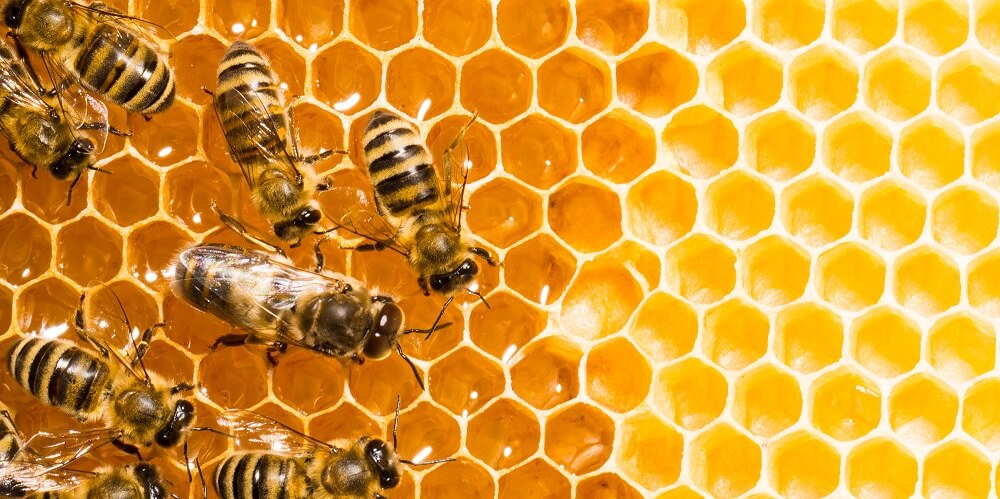
A healthy honeybee colony can make up to 100 pounds of honey per year. They eat their honey storage during the winter months when flowers aren’t blooming.
On the other hand, most species of wasps don’t make honey. The exception is the Mexican honey wasp (Brachygastra mellifica). That said, this wasp only creates honey in tiny amounts.
No other species of wasp or bee create as much honey as honeybees.
Wasps vs. Honey Bees: Pollination
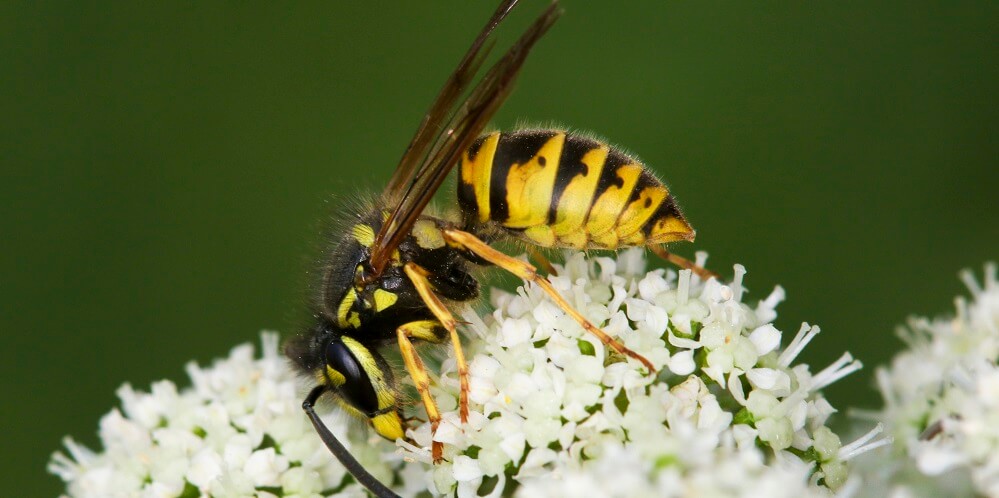
Did you know that pollinators are responsible for one in every three bites of food we eat?(7)
In fact, pollination is required for a variety of crops. This includes fruit crops such as squash, cucumber, tomato, and eggplant. It also includes nuts, seeds, fiber (such as cotton), and hay (alfalfa produced to feed livestock).
Honeybees are probably the most well-known pollinators because they have large hives that can be easily moved by beekeepers. Farmers often pay beekeepers to bring beehives to their land temporarily. As a result, the bees pollinate the crops, increasing their quality and yield.
But let me say this:
All pollinators are important. This includes native bees such as bumblebees and carpenter bees, as well as butterflies, hummingbirds, beetles, and wasps.
Honeybees differ from wasps because they have fuzzy bodies that catch pollen on their hair. They also have designated pollen baskets for storing pollen to bring back to their hives.
As mentioned, wasps don’t have hairy bodies or pollen baskets. This means they don’t transfer pollen from flower to flower in the same way bees do, so they’re considered less efficient pollinators in most cases.(8)
There are exceptions to this, though.
In some cases, wasps surpass bees in pollination. For instance, wasps were more efficient pollinators than bees of the Brazilian Peppertree and the California bee plant.(9)
FAQs on “Wasps vs. Honey Bees”
- Do wasps eat honey bees?
- Do wasps do anything good?
- Do wasps make honey?
- Do wasps steal honey from bees?
- Is it possible to learn how to keep wasps away from honey bees?
- What’s the difference between honey bee venom vs. wasp venom?
- How do you tell a wasp from a bee?
Do wasps eat honey bees?
Unfortunately, yes.
People often ask:
Do bees and wasps get along? Do wasps scare away bees? Are wasps more aggressive than bees?
Yes, wasps are more aggressive than bees. They’re also known to kill honeybees and steal their honey. This is most common during the summer when wasp populations rise and the amount of nectar available decreases.
Strong honeybee colonies can defend themselves against wasp assaults. Weaker and smaller honeybee colonies are vulnerable.
—> Go back to the FAQs on “Wasps vs. Honey Bees”
More to Explore:
Do wasps do anything good? Do wasps pollinate?
Yes, despite their “bad guy” image, wasps are important for our environment.
They help pollinate our flowers and food crops and regulate populations of crop pests such as caterpillars and whiteflies. Without wasps, the world could be over-infested with spiders and insects.
—> Go back to the FAQs on “Wasps vs. Honey Bees”
More to Explore:
Do wasps make honey?
Most species of wasps don’t make honey. The exception is the Mexican Honey Wasp, a type of wasp that can be found in North and South America. These wasps make honey, but they don’t produce nearly as much as honeybees.
A healthy honeybee colony can produce up to 100 pounds of honey per year.
—> Go back to the FAQs on “Wasps vs. Honey Bees”
More to Explore:
Do wasps steal honey from bees?
Yes. The yellowjacket, for example, is a wasp that will try to steal honey from honey bees. They also kill and bring dead bees back to their hives to feed their young.(10)
With that in mind, attacking a honeybee colony isn’t always an easy task for wasps. Honey bees are extremely ferocious when defending their hive, and they will often repel the attackers before they can reach the honey source.
—> Go back to the FAQs on “Wasps vs. Honey Bees”
More to Explore:
- Do Bees Sleep?
- How to Keep Bees Away From Hummingbird Feeders
- Ground Bees: Are They a Threat to You or Your Yard?
Is it possible to learn how to keep wasps away from honey bees?
Yes, there are things you can do to help prevent wasps from attacking your beehive. Here’s a good video showing some tips:
—> Go back to the FAQs on “Wasps vs. Honey Bees”
More to Explore:
What’s the difference between honey bee venom vs. wasp venom?
Bees and wasps deliver different quantities of venom per sting.
A honeybee, for example, delivers up to 50 micrograms of venom in a single sting. As the stinger is inserted into the skin, it continuously injects venom into the body. The sooner you remove the stinger, the less venom it delivers. The full amount of bee venom is usually released into your skin after 45-60 seconds.(11)
A wasp sting delivers a far smaller amount of venom — only 2 to 15 micrograms per sting, but wasps can sting many times without dying.(12)
—> Go back to the FAQs on “Wasps vs. Honey Bees”
More to Explore:
How do you tell a wasp from a bee?
People often ask, “What is the difference between wasps and honeybees?”
Remember:
There are thousands of species of wasps, and they vary in appearance. That said, most honeybees are mistaken for yellowjackets. So let’s compare the two.
The biggest difference between honey bees vs. wasps is their size, body hair, and coloring. Yellowjackets are thinner than honeybees. They have tiny waists known as “wasp waists.” They also have shiny, hairless bodies with vibrant yellow stripes.
Honeybees are slightly thicker, fuzzier, with an orangish-brown color. Usually, when you see one honeybee, you’ll also see several others since they’re social bees with large hives.





